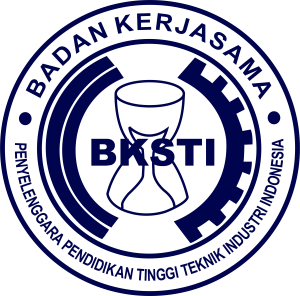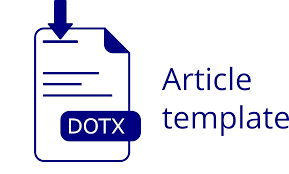Analisis RULA dan Nordic Body Map pada Karyawan di Assembly Section Komponen Sayap Pesawat A350 pada PT. XYZ
DOI:
https://doi.org/10.37090/indstrk.v9i3.2051Abstract
PT. XYZ is a company specializing in the manufacture of aircraft components. Within the spirit division (responsible for developing aircraft wing components), specifically in the A350 aircraft wing assembly section, employees have been observed to suffer from work-related fatigue and physical complaints, consequently impacting production process performance. This study, therefore, aims to analyze the RULA (Rapid Upper Limb Assessment) and Nordic Body Map (NBM) assessment results of employees involved in the A350 aircraft wing component production within the assembly section. Employing a quantitative descriptive research methodology, the study found the NBM assessment for the riveting and drilling tasks yielded a total score of 72 for employee 1, indicating a high risk of developing musculoskeletal disorders (MSDs), necessitating immediate intervention. Employee 2 received a total NBM score of 54, representing a moderate risk of MSDs, suggesting that future action may be necessary. The RULA assessment for the same riveting and drilling tasks resulted in a Grand Score of 5 for employee 1 (high risk of MSDs), requiring immediate corrective action, and a Grand Score of 3 for employee 2 (moderate risk of MSDs), recommending short-term improvements. The proposed improvement strategy utilizes the 5W + 1H method, focusing on redesigning workstations, modifying employee work postures, and implementing regular stretching exercises during work breaks.
Keywords: Musculoskeletal Disorders, Nordic Body Map, Production, RULA
Downloads
References
Adiyanto, O., Mohamad, E., Jaafar, R., Ma’ruf, F., Faishal, M., & Anggraeni, A. (2022). Application of Nordic Body Map and Rapid Upper Limb Assessment for Assessing Work-related Musculoskeletal Disorders: A case study in Small and Medium Enterprises. International Journal of Integrated Engineering, 14(4), 10–19. https://doi.org/10.30880/ijie.2022.14.04.002
Agustin, M., Tannady, H., Ferdian, O., & Alamsjah, S. I. G. (2021). Posture Analysis Using Nordic Body Map and Rapid Office Strain Assessment Methods to Improve Work Posture. JIEMS (Journal of Industrial Engineering and Management Systems), 14(1). https://doi.org/10.30813/jiems.v14i1.2419
Hunusalela, Z. F., Perdana, S., & Dewanti, G. K. (2022). Analisis Postur Kerja Karyawan Dengan Metode RULA dan REBA Di Juragan Konveksi Jakarta.
Krisna Dewanti, G., Perdana, S., & Tiara. (2020). ANALISIS POSTUR KERJA PADA KARYAWAN BENGKEL WARLOK BARBEKU MULTI SERVIS DENGAN MENGGUNAKAN REBA.
Antakari I Gusti Ayu Dewi, & Rosidah Nikmatur. (2024). Analisis Posisi Kerja Terhadap Keluhan Musculoskeletal Disorders (MSDs) Pada Penjahit Garmen Puri Kawan. https://doi.org/10.572349/husada.v1i1.363
Mcatamney, L., & Corlett, E. N. (1993). RULA: a survey method for the investigation of work-related upper limb disorders. In Applied Ergonomics (Vol. 24, Issue 2).
Nugraha, W., Srimurni, R. R., & Listiani, E. (2023). Analisis Reject Produk Sayap Pesawat Terbang Komponen Ref D-Nose Panel Menggunakan Metode Statistical Quality Control (SQC) di PT XYZ. Jurnal Teknik Industri Terintegrasi, 6(1), 91–100. https://doi.org/10.31004/jutin.v6i1.13678
Pratiwi A, & Indah Pratiwi, S. T. ,. (2013). ANALISIS RISIKO MUSCULOSKELETAL DISORDER (MSDs) MENGGUNAKAN METODE NORDIC BODY MAP (NBM) DAN MANUAL HANDLING ASSESSMENT CHART (MAC) TOOL (Studi Kasus: UD Gudang Bawang Agung Rejeki).
Setiawan, D., Hunusalela, Z. F., Nurhidayati, R., & Artikel, R. (2021). Usulan Perbaikan Sistem Kerja Di Area Gudang Menggunakan Metode Rula Dan Owas Di Proyek Pembangunan Jalan Tol Cisumdawu Phase 2 PT Wijaya Karya (Persero) Tbk I n f o r m a s i A r t i k e l A b s t r a c t. Jurnal Ilmiah Teknik Dan Manajemen Industri Universitas Kadiri, 4(2), 78–90. https://doi.org/10.30737/jatiunik.vol
Stack Theresa, & Ostrom Lee T. (2023). Occupational Ergonomics: A Partical Approach (Second Edition).
Suarjana I Wayan Gede, ST. , M. E. (2022). BUKU AJAR DASAR KESELAMATAN KERJA DAN KESEHATAN KERJA.
Sunahara, A. S., Perc, M., & Ribeiro, H. V. (2021). Association between productivity and journal impact across disciplines and career age. Physical Review Research, 3(3). https://doi.org/10.1103/PhysRevResearch.3.033158
Sureka, R., Kumar, S., Kumar Mangla, S., & Hourneaux Junior, F. (2020). Fifteen years of international journal of productivity and performance management (2004–2018). International Journal of Productivity and Performance Management, 70(5), 1092–1117. https://doi.org/10.1108/IJPPM-11-2019-0530
Susihono, W., & Adiatmika, I. P. G. (2021). The effects of ergonomic intervention on the musculoskeletal complaints and fatigue experienced by workers in the traditional metal casting industry. Heliyon, 7(2). https://doi.org/10.1016/j.heliyon.2021.e06171
Susihono, W., & Lady, L. (2021). Implementation of Ergonomic-Based Work Procedures Reducing Complaints of Postural Stress and Work Fatigue Resulting in Increased Employee Income and Company Profit. 11(1).
Susihono, W., Selviani, Y., Kade, I. A., Dewi, A., Luh, N., Liswahyuningsih, G., & Pgri Bali, I. (2020). Musculoskeletal and Postural Stress Evaluation as a Basic for Ergonomic Work Attitudes on Welding Workers.
Tarwaka, Bakri Solichul HA, & Sudiajeng Lillik. (2004). Ergonomi Untuk Keselamatan, Kesehatan Kerja dan Produktivitas (Vol. 323).
Downloads
Published
Issue
Section
License

This work is licensed under a Creative Commons Attribution-ShareAlike 4.0 International License.








